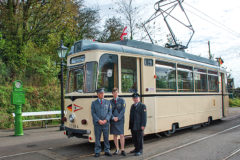A 1949 Renault 3042
Posted by Chris Graham on 13th October 2021
Roy MacGregor has been collecting old tractors for years, and recently imported a 1949 Renault 3042, as Bob Weir reports.
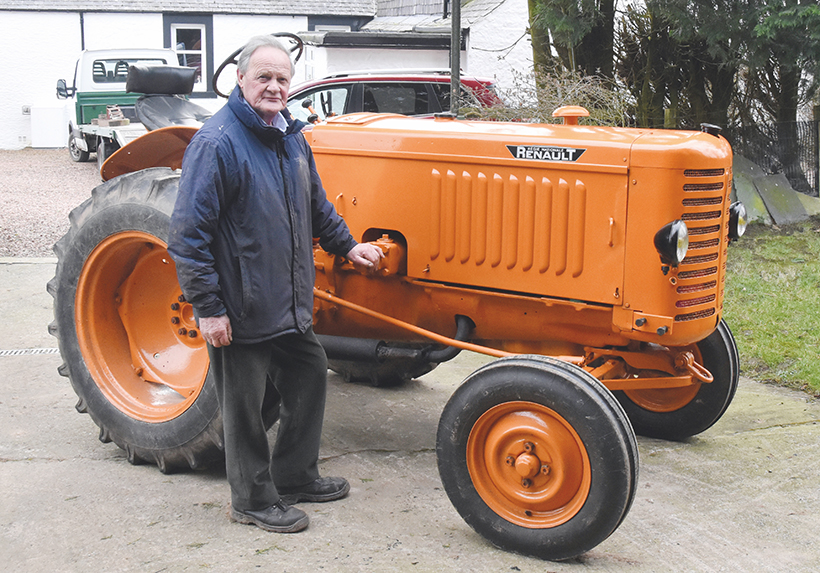
A 1949 Renault 3042: Roy MacGregor has made a few contacts in France over the years and has brought French tractors back to the UK, not only for himself but also for other enthusiasts.
Roy likes his old tractors and, apart from this imported 1949 Renault 3042, he owns a French Farmall Super FCC, a Massy-Harris Pony, a Case DC4, an International B-275, a Massey Ferguson 550 and a McCormick-Deering 10-20.
“I was born in the Dumfries area, and have lived here all my life,” he explained. “My family has been farming for generations, although I now take more of a back seat. I’ve also taken part in several hobbies over the years, including horse riding and motor racing.
“I’ve certainly seen some changes in farming practices. Holdings have become a lot bigger as, these days, you need the extra acreage to make a living. Mechanisation also means fewer people are working the land.” Roy is still involved with horses, and the family runs a local livery business. He also has a property in France, which accounts for his passion for French tractors.
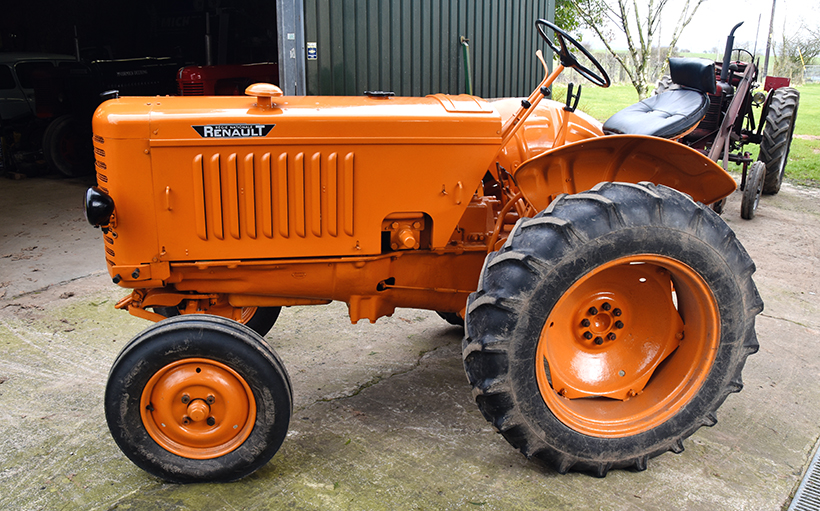
The Renault’s chunky looks struck the right chord with many buyers.
“I’ve made a few contacts in France over the years, and started bringing French tractors back to the UK, mostly for other enthusiasts,” he explained. “I kept a few back for myself, including the Farmall Super FCC and a pair of Renaults.
“I bought the 1949 petrol 3042 from a collector in France; it was part of a deal which included a 7012 equipped with a Perkins P4. I’m happy to tackle most things and like to plan the work well in advance, so I can carry straight through to the end. I’ve found over the years that it also pays to have a good supply of spare parts ready to hand.”
Renault tractors
Renault is probably best known for its cars and involvement in motorsport, yet the Societe Renault Freres built its first tractor in 1919. The machine was a crawler, based on a primitive tank design, which had seen action during the latter days of the First World War.

The 3042 in Roy’s storage area; the 7012 is in the background.
The company soon began making wheeled tractors to take advantage of the increase in mechanisation on French farms. During the Second World War, it also carried out experiments using methane as an alternative to petrol, which was in short supply at that time. The company survived the conflict and was still in business at the end of hostilities.
Following founder Louis Renault’s death, the firm was nationalised in 1945. It was also renamed Regie Nationale des Usines Renault (RNUR). Following re-organisation, the company launched a new model, the type R3040. The R series numbers comprised four digits, and ‘3’ was used to signify a petrol tractor. The other figures showed the different versions, engine and chassis variants, type of radiator, suspension and brakes.
As things turned out, the R series was an important watershed in the history of RNUR. Starting with the model 3040, the new machines would form the backbone of tractor production for the next 10 years.
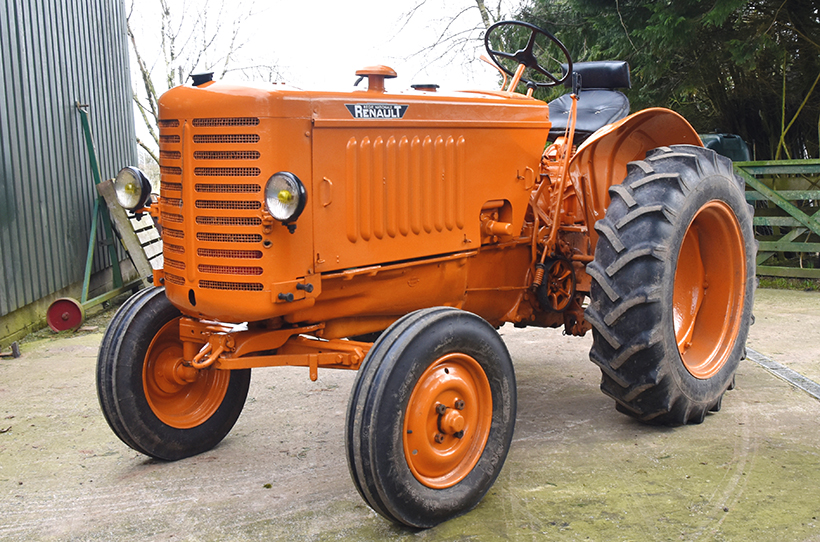
The distinctive orange paint was a bit of an eye-catcher!
French industry had been targeted by Allied bombing during the war, as the Germans had commandeered many factories; the Renault factory had suffered a significant amount of damage. To bring the R Series onto the market, the new design was heavily influenced by an older model – the wartime 304E1. This machine reflected the shortages and privations of the war years, and was basically a stripped-down tractor without the trimmings.
Demand for new tractors was high. Like most occupied countries, France’s population had suffered during the war years. A major effort was required by the country’s agricultural industry to bring food production up to standard.
Tractor specification
The R3040 was quite an advanced design for its day, and was equipped with a two-speed PTO. It also claimed to be the first tractor of its type to offer a full electrical system. It was produced in several variants, using a mixture of in-house engines and power plants brought in by Hispano-Hercules and Perkins.
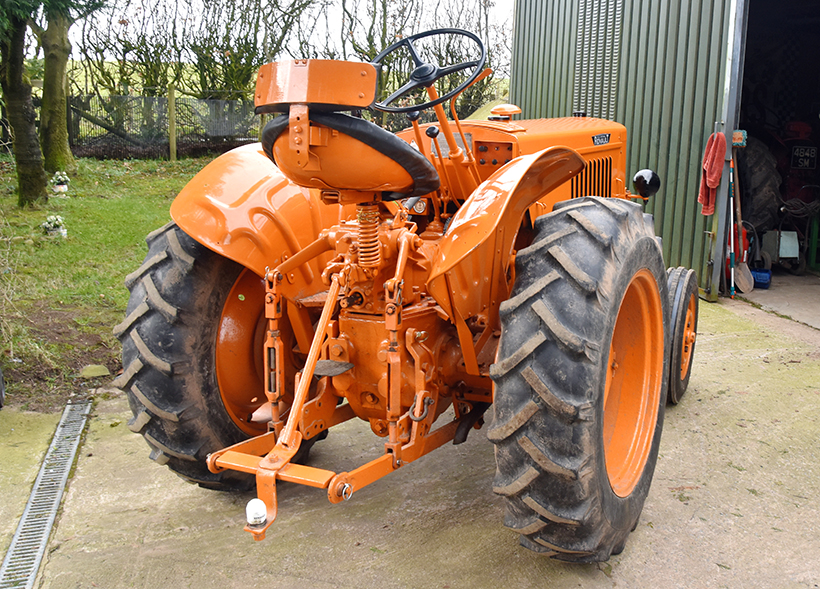
Standard equipment included a two-speed PTO, hydraulic lift and adjustable tread.
The model 3042 was the third tractor in the range, and was launched in 1948. Like many of its contemporaries, the tractor was available with a choice of fuels. These included petrol, paraffin, and alcohol, and buyers were required to specify the fuel to be used when putting in their order.
The 2,383cc side-valve engine was rated at 30hp, and was mated to a five-speed gearbox. This delivered a top speed of almost 14mph. The tractor was well-equipped for the time, with standard features including hand and independent foot brakes plus an electric starter.
There was also an extensive options list offering useful extras like a side-mounted belt pulley and a 627rpm power take-off shaft. This was located on either side of the tractor and was intended to drive a side-mounted cutter bar mower. Owners could also opt for a bolt-on hydraulic linkage unit, which was powered by the rear 552rpm PTO. The tractor was also equipped with six-volt electrics, although the engine could also be started using a traditional hand crank.
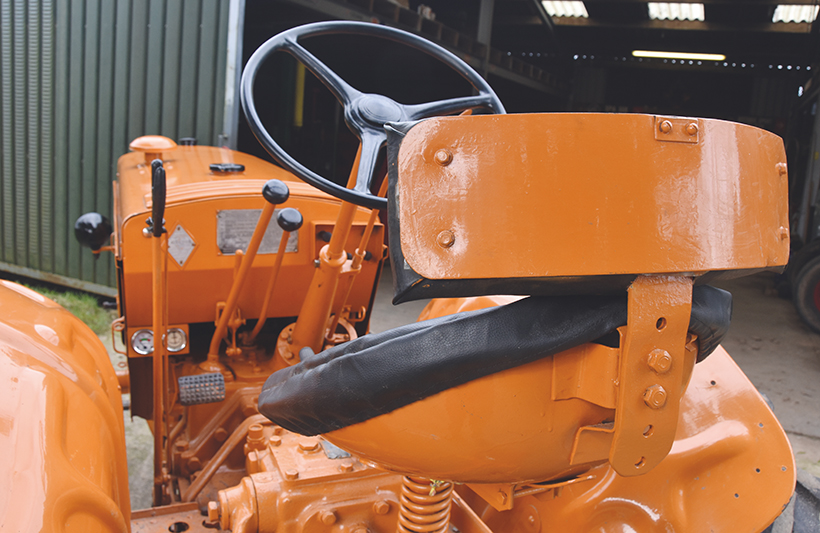
The R 3040 series claimed to be the first machine with a full electrical system.
Renault publicity of the time stated examples of the tractor’s uses, which included ‘the ploughing of five acres of medium soil, 10in in depth with a double plough in one.’ Although the 3042 was popular with owners, only 9,635 left the factory before the tractor was phased out in 1955.
From work to play
After he retired from motor racing in 2013, Roy started collecting tractors and competing at ploughing matches. He said: “I bought an International B-275 back in 1999, which I still use with a log-splitter, and then bought a 1941 Case DC4 in 2013, which I entered in vintage ploughing matches. Although the sport is obviously not as fast as motor racing, it’s just as competitive. I can’t say I am particularly good, but I certainly enjoy it. When I am ploughing, I use either a Ransomes TS43A or model TS64.
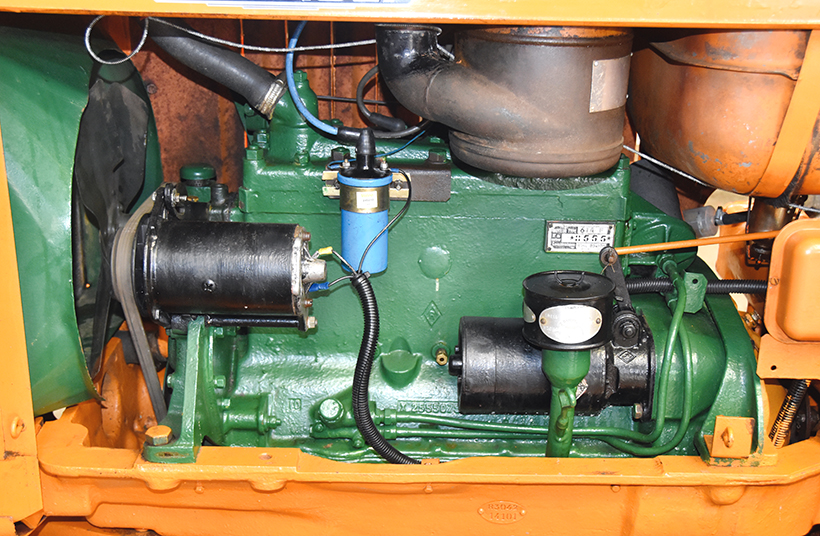
The 2,383cc side-valve engine was rated at 30hp and was mated to a five-speed gearbox.
“The 3042 isn’t registered for use just now, but I drive it around the yard. It’s very powerful and handles well. The machines were well built and are easy to work on. The panels were made of solid metal, so were all in reasonable shape. I have connections in France and so getting hold of spare parts has never really been an issue.
“Because the tractor has a cast chassis, it’s certainly a heavy beast. I also like the orange paint. The 3042 is a lot thirstier than the v, but it doesn’t get a lot of work. To be realistic, I’ve probably got too many tractors in my collection at the moment, and may be tempted to move a few on. Whether that includes the 3042, we’ll just have to wait and see.”
If anybody would like to contact Roy about buying any of his tractors, his mobile number is 07850 250806.
For a money-saving subscription to Tractor & Farming Heritage magazine, simply click here




